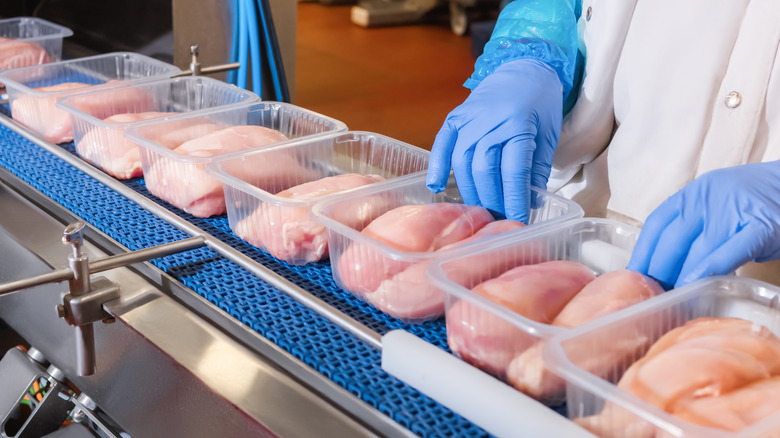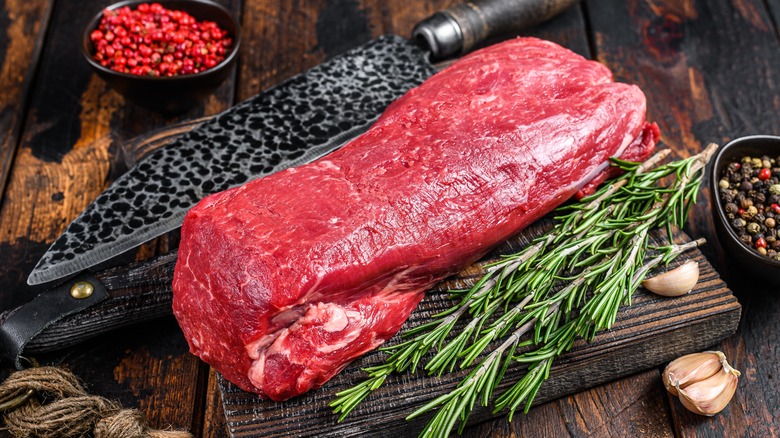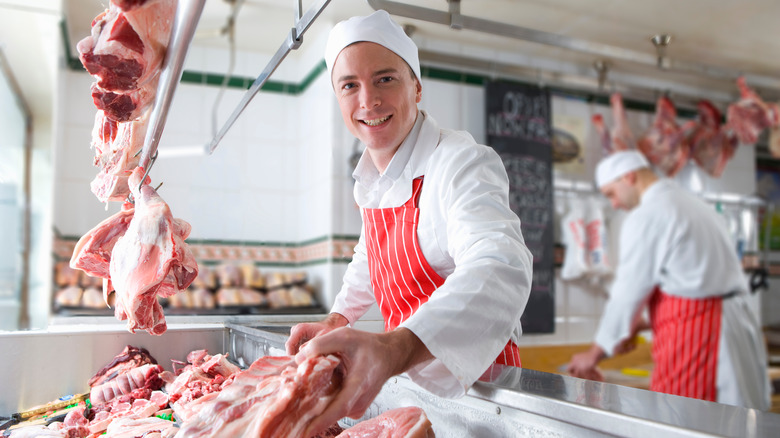You Should Think Twice About Buying Pre-Cut Meat At The Grocery Store
To keep up with our busy lives, we are always seeking out conveniences that save us time and energy and allocate the work to someone else. Yet, sometimes, these easy shortcuts cost us more than they're worth. With incessant talk of inflation and bad news for basic consumer costs, it may be worth reexamining some things in our daily life that purportedly help us out — especially with essential items like meat.
While meat is something many of us enjoy in our regular meals, it is always one of the more expensive items on our grocery lists. Whether it is chicken, beef, or pork, meat-eaters are accustomed to purchasing it pre-cut and packaged and don't really consider alternative options. Why add more work to your evening meal preparation, right? The answer is that, while these pre-cut sections of meat might seem like the best choice, there are convincing reasons to purchase your meat in larger slabs.
Better for the wallet
When you purchase pre-cut meat at the grocery store you are paying extra for someone else to cut it, and this can be nearly a 60% mark-up with items like chicken tenders, steak kabobs, and cubes of meat for stir-fry (via Woman's Day). Retailers take advantage of consumers' tendency to seek convenience and will put a premium on any item in which they do the so-called busy work.
A package of pre-cut boneless chicken is approximately $3.47 per pound but the whole bird itself is $1.55, so you are essentially paying twice as much not to cut it yourself (per Real Simple). According to Eat Like No One Else, a pre-cut filet mignon at the grocery store is at least $20, whereas you can purchase a whole beef tenderloin for closer to $10 and cut it into a filet mignon yourself (if you've got the skills). Many will opt not to purchase larger or whole slabs of meat, thinking they will have too much waste. But fear not, for that is why we invented the freezer, and, as Carnivore Style suggests, you can simply wrap meat tightly in plastic to prevent freezer burn and it can last for months.
It's also better for you
Cutting your own meat seems labor intensive, but it only amounts to a few extra minutes; and as a bonus, you don't sacrifice any quality, since once meat is cut and exposed to oxygen, the surface will start to deteriorate (via The Frugal Foodie). In terms of quality, Serious Eats points out that the precut packages of stew or stir-fry beef may actually be cut from scraps of varying cuts of meat, with inconsistent amounts of fat, leading to a less predictable flavor and texture in your meal.
Also keep in mind that pre-cut meat may not even be the right size your recipe calls for. Local butchers (or those behind the counter in supermarkets) can advise you about whole slabs of meat that are more responsibly sourced and of better quality than the pre-packaged cuts offered by national grocery chains (per Skips on the Ridge). Butchers in general can also be a great resource, not only to learn how to cut your own meat, but with advice about the best cut to buy and the smartest ways to cook it.
Sharpen those knives and get to work — your pocketbook and your tastebuds will thank you.


